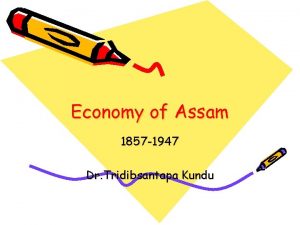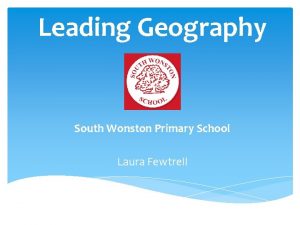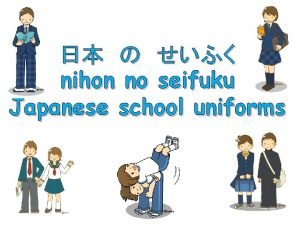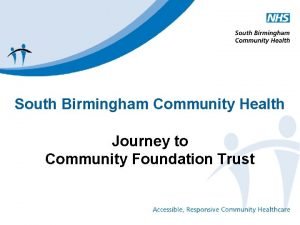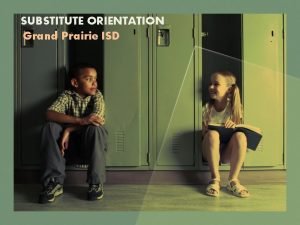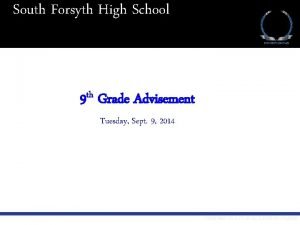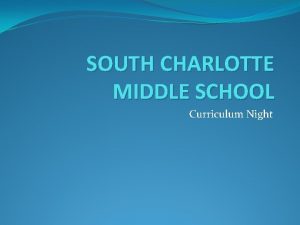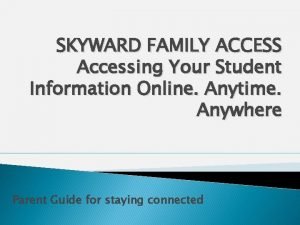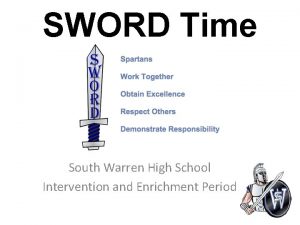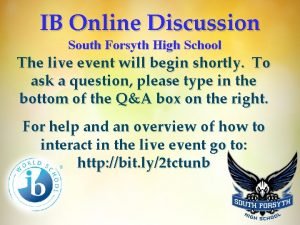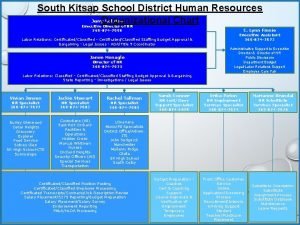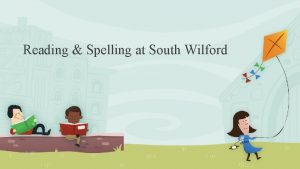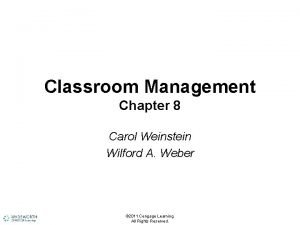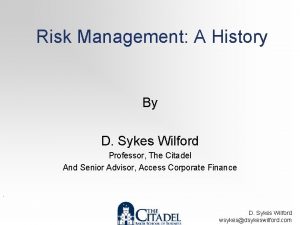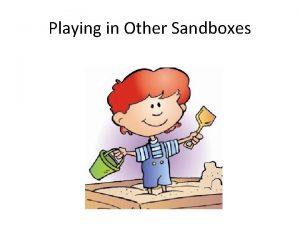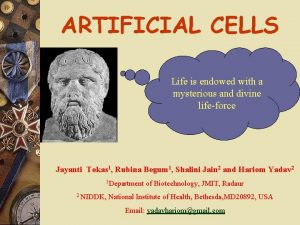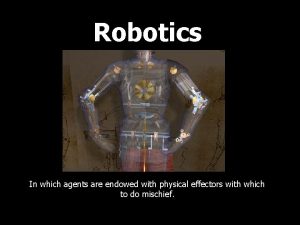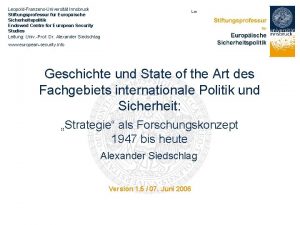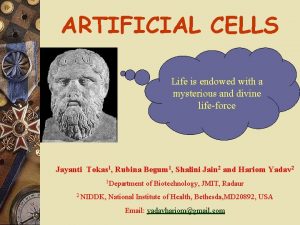South Wilford Endowed CE VA Primary School An





















- Slides: 21

South Wilford Endowed CE VA Primary School An Introduction to Phonics “wee orl hav ay strong nolij and ferm understanding ov hou langwij werx”

To introduce Phonics and to explain how it is used at school to teach reading and writing. To develop your confidence in supporting your child with their reading and writing at home. To provide some ideas for phonics games and activities to try with your child at home.

Letters and Sounds – a brief introduction Jim Rose’s (2006) review of early reading concluded that high quality phonic work should be the prime means of teaching children how to read and write. As a result, the government developed a phonics programme, based on the best practice seen in successful settings. Letters and Sounds is a 6 phase teaching programme which is designed to run from FS 1 to Year 2. Phonics sessions take place for 15 -20 minutes every day, as pace, repetition and frequency are essential. Phonics should be fast-paced, interactive and fun: “Taught well, spelling can be a magical way of interesting children in language, or it can be a mindless chore”.

The Simple View of Reading language comprehension Good language comprehension, poor word recognition g o o d poor Poor word recognition, poor language comprehension Good word recognition, good language comprehension good p o o r Good word recognition, poor language comprehension

Phonics is… segmenting and blending sounds + grapheme-phoneme correspondences

The 44 phonemes Try to use ‘Pure Sounds’ when pronouncing the letter sounds s a t p i n m d g o c e u r h b f l j v w x y z qu ch sh th th ng ai ee igh oa oo oo ar or er ow oi ear air ure

Basic and Advanced Codes Basic Code (taught in Foundation Stage) One way of representing each of the 40+ sounds /ee/ in meet. Expect to see taught graphemes appearing in children’s writing! (taic for take) Advanced Code (taught in Years 1 and 2) Alternative ways of representing each of the 40+ sounds tea be baby babies key taxi receive Pete

How many sounds? tray train green bike find snow tea night thigh spoil shark snore zoo chew sunny stairs no town hear holiday

How many sounds? t-r-ay t-r-ai-n 4 4 s-n-ow 3 sh-ar-k 3 g-r-ee-n 4 b-i-k(e) f-i-n-d 4 3 t-ea 2 s-n-ore 3 n-igh-t z-oo 3 th-igh s-p-oi-l 4 ch-ew s-u-nn-y 4 2 2 2 s-t-air-s n-o 2 t-ow-n 3 h-ear 2 h-o-l-i-d-ay 4 6

Using phoneme frames – segmenting for spelling 1 2 3 4 sh ee p c r a ea t b

Phonics Session • Revisit/review (previously learned phonemes/tricky words) • Teach 1 (me!) • Practise (us!) (new phonemes/tricky words) • Teach 2 (me!) • Practise (us!) (read or write words with new phonemes) • Apply (you!) (read or write a sentence using tricky words and new phonemes)

Some phonics jargon! • Phoneme the smallest unit of sound in a word (sh in sheep, t in night) • • Grapheme the letter shape that represents the letter sound Digraph two letters that make one single sound (sh, ch, oo, ee) VC words made up of a vowel and a consonant (it, an) CVC words made up of a consonant, vowel and consonant (g-e-t, p-ai -n) • Tricky word can’t be spelt or read by sounding it out (the, does, was) • Segment break a word down into individual sounds (chain → ch-ai-n) • Blend slide individual sounds together to make a word (ch-ai-n → chain) • Split vowel digraph two vowels making one sound, separated by another letter (a-e make, o-e home) • Cluster two or three letters making two or three sounds, (the first three letters of ‘straight‘ or the first two letters of ‘green’ are consonant clusters)

The six phases Phase Descriptors 1 Develop listening skills and awareness of sounds in the environment. Begin to orally blend & segment words, and explore & experiment with sounds & words (through listening walks, drumming, sound stories, sound lotto etc. ). 2 Learn 19 phoneme-grapheme correspondences, and move on from oral blending and segmenting to blending and segmenting with letters. Read and spell some two and three letter words. The first 6 tricky words (I, go, no, the, to, into) are taught. 3 Learn the remaining 25 phoneme-grapheme correspondences, most of which comprise of 2 letters (digraphs). Continue reading and spelling CVC words and tricky words, and applying this knowledge to read and write simple captions and sentences. Learn the letter names of the alphabet (e. g. ay, bee, see, dee). 4 Consolidate knowledge of all letter sounds and digraphs taught through reading and spelling poly-syllabic words, and words that contain consonant clusters. 5 Learn alternative spellings for digraphs (ai, ay, a, a-e, eigh, ey) and alternative pronunciations of previously taught digraphs (ea in leaf, ea in bread) 6 Children become fluent readers and increasingly accurate spellers, looking at suffixes and prefixes, plurals, tenses and three-syllable words.

Phase Coverage Foundation Stage 1: Phase 1, introduce Phase 2 Foundation Stage 2: Phases 2, 3 and 4 Year 1: Phase 5 Year 2: Phase 6 Assessment • We group pupils in order to best meet their needs, with teaching assistants leading one phonics group whilst the teacher takes the other. On-going assessments are made and children move between the groups as appropriate. • Pupils are formally assessed at the end each term – we check phonemes and words known to ensure pupils are progressing through the phases, and re-arrange groups if necessary.

Phase One • Some children may still need some support with phase 1 – it • • may help your child if you practise these at home Aspect 1: Environmental sounds e. g. stories – walk around the local area. What can you hear? Aspect 2: Instrumental sounds e. g. bags of instruments – add sounds effects Aspect 3: Body percussion e. g. action songs and rhymes Aspect 4: Rhythm and rhyme e. g. Rhyming stories – what rhymes with…. ? Aspect 5: Alliteration e. g. having fun with names, story characters Aspect 6: Voice sounds e. g. adding different voices to stories Aspect 7: Oral blending and segmenting e. g. robot speech c -a-t and put it together.

Phonic activities and games • Silly soup • Flashcards (silly voices) • Quick-write • Sound buttons/phoneme count • Robot talk (Old Macdonald/Simon Says/instructions) • Buried Treasure • 4 corners • Bingo (with letters, digraphs or words) • ‘I spy’ (something beginning, or ending, or rhyming with…) • Display tricky words around the house • Playdough or collage letters and words • ‘Real life’ writing (lists, cards, letters, invitations) • Fridge magnets , foam letters in the bath, letter formation in the sand • Read stories regularly, and signs and labels (e. g. roads, shops) • Explore rhymes, make up nonsense words/sentences • Play literacy games (board games, internet) • Alphablocks - cbeebies

Teaching tricky words • Write the word on paper, cut out each letter and put the word back together. • • • Write the word three times. Trace over it in different colours. Look, say, cover, visualise, write, check. Play bingo with the words. Small word inside the word Write the word in a nonsense sentence. Find words with similar patterns. e. g. the, them, they Write the word, draw around the shape of the word and cut out. Can you add ing or s to any words. Put words into alphabetical order.

Useful Resources • www. letters-and-sounds. com • www. starfall. com • www. phonicsplay. co. uk • www. familylearning. org. uk/phonics_games. html • www. bbc. co. uk/cbeebies/fun-with-phonics • www. bbc. co. uk/schools/wordsandpictures • www. oxfordowl. co. uk/Reading • www. educationcity. com ‘Foundation Stage 2: ‘Letters & Sounds’

Reading and Writing at home • High Frequency ‘Tricky’ Words and Letter Sound Tiles • Reading Records – write in each time (even a short comment) • Reading books – read as often as you can! • Writing: pencil grip, fine motor control, letter formation • Work from home

Finally… • Maths – number recognition & formation • Tapestry and class page on website • Water bottles • Name labels on ALL belongings

Questions?
 South wilford school
South wilford school Paul wilford
Paul wilford Ucla endowed chairs
Ucla endowed chairs Brandz brand equity model
Brandz brand equity model Endowed
Endowed Brand is the added value endowed to products and services
Brand is the added value endowed to products and services Brand exploratory questions
Brand exploratory questions South wonston primary school
South wonston primary school Old south vs new south streetcar named desire
Old south vs new south streetcar named desire Japanese male school uniforms
Japanese male school uniforms South birmingham primary care trust
South birmingham primary care trust Magenta cyan and yellow are the ____ color. *
Magenta cyan and yellow are the ____ color. * Grand prairie isd employment
Grand prairie isd employment South forsyth high school pathways
South forsyth high school pathways South forsyth high school counselors
South forsyth high school counselors South dade middle school
South dade middle school South charlotte middle school
South charlotte middle school South kitsap skyward
South kitsap skyward South warren high school
South warren high school South forsyth high school ib program
South forsyth high school ib program South river athletics
South river athletics Central kitsap school district human resources
Central kitsap school district human resources




